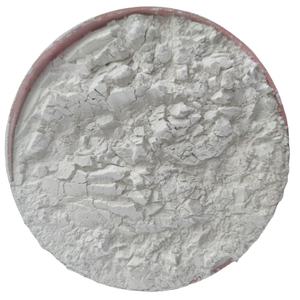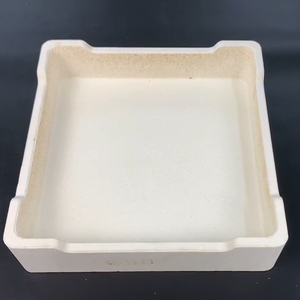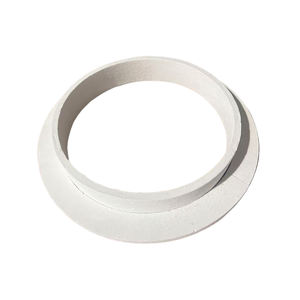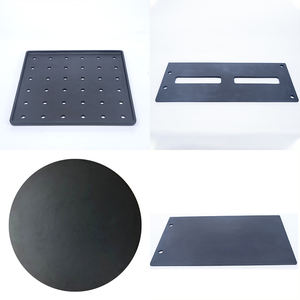Professional industry ceramic supplier, silicon nitride, silicon carbide, aluminum nitride and any other kinds of ceramics.
PRODUCT PARAMETERS
Description
Overview of High Alumina Refractory Cement CA50 CA60 CA70 CA80 CA90 A700 A800 Aluminate Cement
High Alumina Refractory Cement CA50 CA60 CA70 CA80 CA90 A700 A800 Aluminate Cement are non-metallic substances designed to withstand extreme temperatures exceeding 1,000°C, along with harsh chemical and physical stresses. They are essential for the inner linings of industrial furnaces, kilns, reactors, and incinerators, providing critical thermal insulation and structural integrity in processes ranging from metal and glass manufacturing to power generation.
Features of High Alumina Refractory Cement CA50 CA60 CA70 CA80 CA90 A700 A800 Aluminate Cement
-
High-Temperature Resistance: Maintain structural strength and stability at temperatures often exceeding 1500°C.
-
Excellent Thermal Shock Resistance: Withstand rapid heating and cooling cycles without cracking or spalling.
-
Chemical Inertness: Resist corrosion and degradation from slags, molten metals, and acidic or basic environments.
-
High Mechanical Strength: Possess considerable load-bearing capacity at operating temperatures.
-
Low Thermal Conductivity: Provide effective insulation to improve energy efficiency and protect furnace structures.
-
Abrasion Resistance: Withstand erosion from solid materials and gas flows.
Specification of High Alumina Refractory Cement CA50 CA60 CA70 CA80 CA90 A700 A800 Aluminate Cement
High Alumina Refractory Cement is a special hydraulic binder. It sets hard. It gains strength fast. It handles very high heat. This cement is different from regular Portland cement. Its main ingredient is alumina, not lime. This makes it much better for hot places. It is used to build and patch furnaces, kilns, boilers, and other high-temperature equipment. It bonds well with firebricks and castables.
Several common grades exist. Each grade has its own properties. The grade depends on the alumina content. CA50 cement has about 50% alumina. It offers good strength and setting time. It is a cost-effective choice for many jobs. CA60 cement has about 60% alumina. It handles slightly higher temperatures than CA50. CA70 cement has about 70% alumina. It withstands more intense heat. It sets quickly. CA80 cement has about 80% alumina. It is for very demanding high-heat applications. It offers excellent refractoriness. CA90 cement has about 90% alumina. It is the top performer for extreme temperatures and chemical attack. It is the most specialized and expensive.
A700 and A800 are strength designations. They refer to compressive strength measured in kg/cm². A700 cement must reach 70 MPa (about 700 kg/cm²) strength after 3 days. A800 cement must reach 80 MPa (about 800 kg/cm²) strength after 3 days. These grades guarantee high early strength development. This is vital for quick repairs or fast construction schedules.
All these cements share key benefits. They resist heat very well. They resist chemical corrosion from slags and fumes. They set and harden fast. They develop high strength early on. They bond strongly to refractories. They work well in castable mixes. Choosing the right grade depends on the specific temperature needed. It also depends on the required strength and speed. It depends on the chemical environment. Always check the exact technical data sheet for the product. Match the cement grade to your furnace or kiln’s operating conditions. Using the correct cement ensures longer life and better performance for your refractory lining. Proper installation is also critical.
Applications of High Alumina Refractory Cement CA50 CA60 CA70 CA80 CA90 A700 A800 Aluminate Cement
High alumina cement handles extreme heat. It sets fast and gets strong quickly. This material works well for lining furnaces, kilns, and boilers. Different grades exist for different heat levels and jobs. CA50 and CA60 cement are common choices. Builders use them for general refractory linings and patching. They offer good performance for everyday high heat needs. They are cost-effective for many industrial settings.
CA70 and CA80 cement handle much higher temperatures. They are tougher. These grades are perfect for demanding areas like cement kiln transition zones or steel ladle linings. They resist chemical attack and intense heat better. They last longer under severe conditions.
CA90 cement is the top performer. It withstands the highest temperatures possible. Use it for critical spots in steel furnaces or glass tank linings. It provides maximum heat resistance. This cement is essential for extreme industrial processes.
A700 and A800 aluminate cement are similar high-performance options. They are often used interchangeably with the CA series. These cements are excellent for precast refractory shapes and specialty mixes. They ensure strong bonds and durability in harsh environments. They are reliable for demanding applications.
Choose the grade based on the required temperature and chemical resistance. Each type serves a specific purpose in high-heat industries. Proper selection ensures long-lasting performance and safety.
Company Profile
Tanki New Materials Co.Ltd. focus on the research and development, production and sales of ceramic products, serving the electronics, ceramics, chemical and other industries. Since its establishment in 2015, the company has been committed to providing customers with the best products and services, and has become a leader in the industry through continuous technological innovation and strict quality management.
Our products includes but not limited to Aerogel, Aluminum Nitride, Aluminum Oxide, Boron Carbide, Boron Nitride, Ceramic Crucible, Ceramic Fiber, Quartz Product, Refractory Material, Silicon Carbide, Silicon Nitride, ect. please feel free to contact us.

Payment Methods
T/T, Western Union, Paypal, Credit Card etc.
Shipment Methods
By air, by sea, by express, as customers request.
5 FAQs of High Alumina Refractory Cement CA50 CA60 CA70 CA80 CA90 A700 A800 Aluminate Cement
Here’s the information about High Alumina Refractory Cement:
What is high alumina cement? This cement is special. It contains a lot of alumina. Alumina comes from bauxite. It gets very hot when it sets. This cement gets hard fast. It stays strong even in extreme heat. That’s why it’s called refractory. It bonds bricks and shapes. It lines furnaces and kilns.
What jobs need this cement? It works where fire is hot. Use it for boilers, kilns, incinerators. It patches furnace linings. It makes precast fire blocks. It seals cracks in hot places. Ordinary cement fails here. This cement handles the heat.
What do CA50, CA60, CA70, CA80, CA90 mean? These letters show strength. CA50 has lower strength. CA90 has the highest strength. Higher CA numbers handle hotter fires. Pick CA50 for moderate heat. Pick CA90 for the hottest spots. A700 and A800 are similar. They also show high strength levels.
How fast does it set? This cement sets very quickly. Mix it just before you use it. You have maybe 30 minutes. Add water slowly. Mix it thoroughly. Work fast once it’s wet. Hot weather makes it set faster. Cold weather slows it down slightly.
How do you cure it properly? Water curing is essential. Keep it damp for 24 hours. Spray it gently. Cover it with wet cloths. Never let it dry out early. This builds maximum strength. After one day, it can air dry. Then it’s ready for high heat.
REQUEST A QUOTE
RELATED PRODUCTS

Customized 1260C White Ceramic Fiber Wool Bulk High-Performance Refractory Raw Materials for Furnace Lining

1260 Alumina Silicate Heat Insulation Refractory Ceramic Fiber Board Top Performance Building Material Ceramic Plate

25/50mm Thickness Ceramic Fiber Blanket 1260 Degree Celsius 128kg M3 Refractory Ceramic Fiber Wool Blanket

Refractory Infrared Gas Burner Cordierite Honeycomb Ceramic Plate

Self-Flow Castable Refractory Materials For Industrial Furnaces Complex Shapes Refractory Lining Custom Cutting Service



